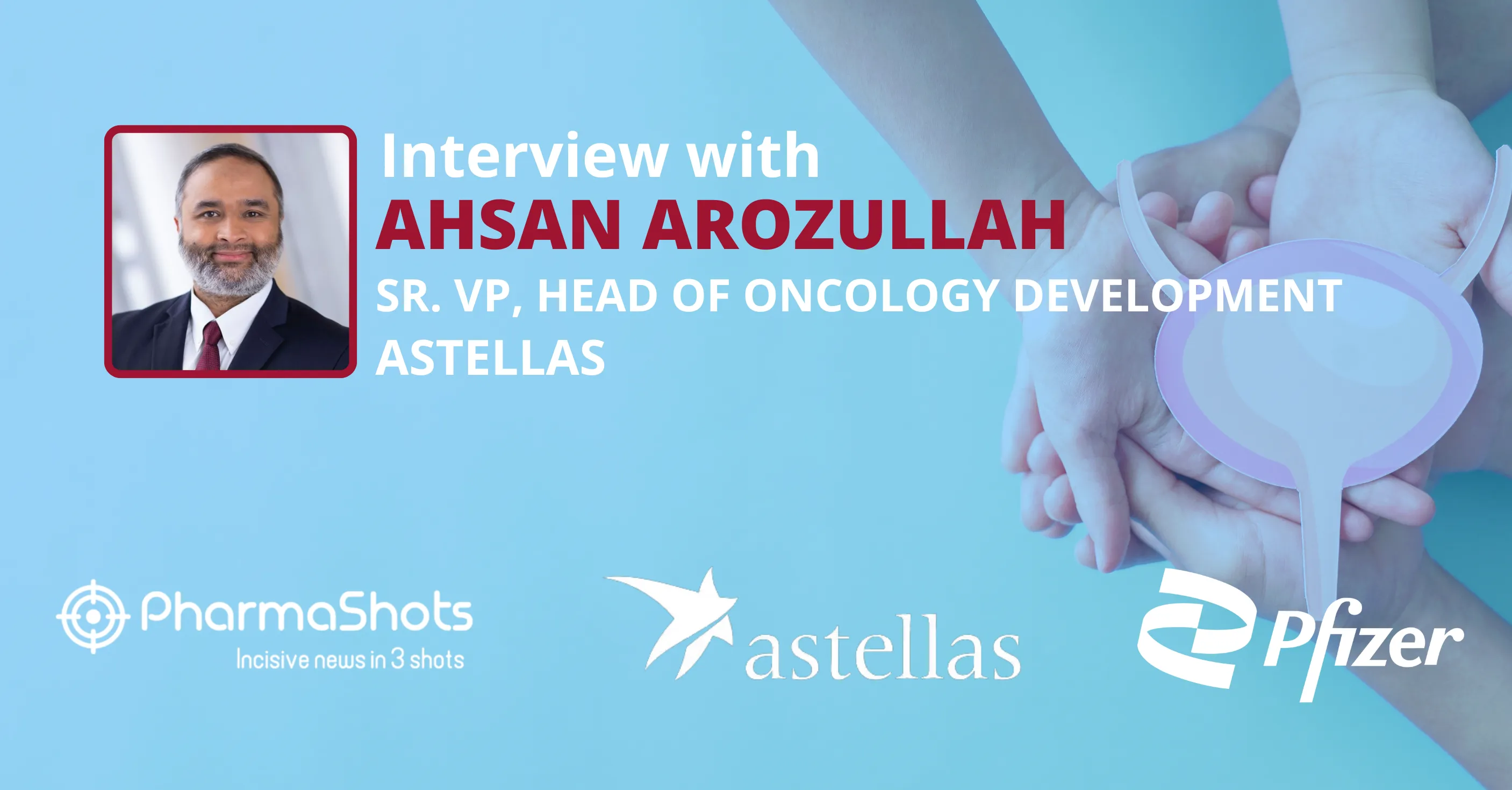
PharmaShots Interview: Entasis Therapeutics’s Manos Perros Shares Insight on the Data of Sulbactam-Durlobactam (SUL-DUR) for Carbapenem-Resistant Acinetobacter Infections
In an interview with PharmaShots, Manos Perros shares his views on the data from the P-III (ATTACK) trial of sulbactam-durlobactam (SUL-DUR) for carbapenem-resistant acinetobacter infections
Shots:
- The P-III ATTACK trial evaluates SUL-DUR vs colistin in 207 patients with infections caused by Acinetobacter baumannii at 95 clinical sites in 17 countries
- The trial met its 1EPs i.e., patients achieved non-inferiority in 28-day all-cause mortality in CRAB m-MITT population of Part A (19.0% vs 32.3%), similar trends were observed in 28-day and 14-day all-cause mortality across all study populations, a significant difference in clinical cure at TOC was observed (61.9% vs 40.3%)
- The therapy showed a reduction in nephrotoxicity (13.2% vs 37.6%), overall AEs in the safety population (87.9% vs 94.2%) in Part A & 89.3% in Part B. The company plans for NDA submission in mid-2022
Tuba: Shed some light on the epidemiology of carbapenem-resistant Acinetobacter infections.
Manos Perros: Unlike other serious hospital-acquired bacterial infections such a Pseudomonas, there is no diagnosis code for Acinetobacter infections in the US, and deaths that result from carbapenem-resistant Acinetobacter (CRAB) are frequently not recorded as such. We estimate about 20,000-40,000 infections each year in the US alone, which is supported by both specialized hospital databases and our internal analyses. For those patients suffering from CRAB infections, mortality can be as high as 50%.
Tuba: What is Sulbactam-Durlobactam (SUL-DUR)? Discuss its MoA and route of administration in CRABC patients.
Manos Perros: SUL-DUR is a novel investigational treatment, for which we just announced positive Phase 3 data. It’s a new take on an old trick that scientists developed to fight bacteria: sulbactam is an old antibiotic, but widely successful for the treatment of Acinetobacter until it became CRAB. In CRAB, sulbactam is degraded by bacterial enzymes called “beta-lactamases”. This is also an old trick, that bacteria use to defend themselves against our antibiotics. The good news is, we can outsmart them on this one. Durlobactam is a broad-spectrum beta-lactamase inhibitor (BLI), which can prevent bacterial enzymes from degrading sulbactam. By combining sulbactam with durlobactam, we have a novel, powerful, and targeted investigational antibiotic against CRAB.
Tuba: Would you like to share the study design for this P-III (ATTACK) Trial?
Manos Perros: ATTACK was the first trial ever to successfully evaluate a new treatment for patients infected with CRAB. It’s the first trial ever to demonstrate efficacy and safety in a pathogen-specific, serious hospital bacterial infection. The challenge with running clinical trials in acute drug-resistant bacterial infections is that these are life-threatening infections where every hour counts. Often by the time the patient is identified and diagnosed, several hours have passed and the patient is either too sick to be eligible for enrolment or has been given an alternative treatment for too long which can influence the outcome. We took advantage of the high rates of resistance in Acinetobacter (in our trial, over 95% of the Acinetobacter infections were carbapenem-resistant) and a rapid diagnostic to quickly screen patients for enrolment into our trial. While the safety endpoints were measured in all subjects, the efficacy analysis for the primary endpoint was conducted in CRAB patients only, and that’s one key innovation of ATTACK. The second is the fact that in this single global trial, we enrolled patients from the Americas, Europe as well as Asia, including China, in partnership with Zai Lab. This would give us and Zai a path to regulatory submissions in multiple Asia-Pacific countries while we focus on the US and the rest of the world.
Tuba: Discuss the key results of Sulbactam-Durlobactam (SUL-DUR) versus colistin from Phase 3 ATTACK trial in patients with carbapenem-resistant Acinetobacter infections?
Manos Perros: SUL-DUR demonstrated statistical non-inferiority in a predefined analysis of 28-day all-cause mortality in patients with carbapenem-resistant Acinetobacter. It is worth noting that a high proportion of these patients were resistant to multiple lines of treatment, commonly referred to as “MDR” and “XDR”, meaning “multi-drug resistant” and “extremely drug-resistant” respectively. Not only is this the first time that a new treatment demonstrates efficacy in that patient population, but analysis in all predefined subgroups and time points analyzed, consistently and strongly favored SUL-DUR. In addition, there was a statistically significant difference in clinical cure rates, an important and clinically meaningful outcome, at both end-of-treatment and early follow-up. Finally, there was a clear advantage of SUL-DUR over colistin in terms of side-effects and tolerability, with a predefined analysis of nephrotoxicity where we reported a highly statistically significant advantage for SUL-DUR over colistin. The profile of SUL-DUR in this comparator study was consistent with observations from a second, open-label arm of the ATTACK trial, which enrolled seriously ill patients who were not eligible for treatment with colistin combinations, largely due to confirmed colistin-resistance. Altogether, this seminal study produced robust, rarely seen results in an antibacterial field where incremental improvements have been the recent norm.
Tuba: Are there any other indications Entasis is accessing with Sulbactam-Durlobactam?
Manos Perros: While durlobactam is a broad-spectrum betalactamase inhibitor, the combination with sulbactam has targeted activity against Acinetobacter. This is what makes this treatment particularly meaningful, it has been specifically designed and optimized for those patients infected with CRAB. However as you may have seen, in ATTACK SUL-DUR was infused on a background of imipenem (as was the comparator colistin). The combination of SUL-DUR with imipenem has been shown to have broad-spectrum activity against multiple serious Gram-negative pathogens, including drug-resistant pseudomonas, carbapenem-resistant Enterobacteriaceae, stenotrophomonas as well as many biothreat pathogens. Once full data from the ATTACK trial is available, we will analyze it for outcomes in seriously ill patients with polymicrobial infections (meaning patients who had infections with other pathogens in addition to Acinetobacter). That will tell us whether our preclinical data against these other Gram-negative pathogens translates into the patients in the ATTACK clinical trial.
Tuba: What are all the other products in the Entasis pipeline?
Manos Perros: Each of our pipeline products has a similarly focused profile, targeting high-medical need drug-resistant pathogens. Our second most advanced candidate, zoliflodacin, is currently in a global Phase 3 clinical trial against Neisseria gonorrhea, the causative bacterial pathogen of gonorrhea, which is enrolling patients in four continents. Behind that, we have ETX0282CPDP, an oral antibiotic combination against carbapenem-resistant enterobacterales, and the latest candidate ETX0462, the first in a new class of antibiotics with activity against multiple Gram-negative pathogens. EXT0462 was the subject of a high-profile publication in the prestigious scientific magazine Nature. One can pair innovation and scientific excellence with meaningful clinical advances, and we are proud of the work that our scientists have done to translate exciting science into potential new medicines.
Tuba: When are you expecting FDA approval for Sulbactam-Durlobactam?
Manos Perros: We are not guiding to an approval timeline, but SUL-DUR has “QIDP” and “fast track” designations, which provides for expedited review by the FDA. With a projected NDA submission in mid-2022, SUL-DUR could be available for patients in the US as early as 2023.
Tuba: What is Entasis’ go-to-market strategy, Is Entasis planning to initiate an HCP & Patient Education and engagement program?
Manos Perros: While too early to expand into detailed projections of our go-to-market strategy, we believe that a product such as SUL-DUR can be marketed by a small company like Entasis. The well-defined call points (Acinetobacter patients are mainly found in large, urban ICUs, burn trauma centers, cancer treatment centers, and large transplant units), combined with the clear unmet medical need of the indication and the compelling data from our trials should enable a streamlined commercialization approach, which is well within reach of small biotech. These are seriously ill patients and disease awareness is already high, but SUL-DUR is the first hospital pathogen-targeted antibiotic, and if approved, education of HCPs and the community will be part of our preparation for a successful commercial launch of SUL-DUR.
Source: The Active Times
About Author: Manos Perros is Chief Executive Officer and co-founder of Entasis Therapeutics. Dr. Perros received the PhRMA Discoverer’s Award in 2010. Dr. Perros received Ph.D. in Biochemistry, Molecular Virology, Rommelaere Lab from Institut Pasteur & conducted his Ph.D. work in Belgium, France, and Germany, and was an associate in the Biophysics department at Yale. He is a co-inventor of the HIV treatment maraviroc (Celsentri/Selzentry) on which he worked from inception until the product’s launch
Related Post: PharmaShots Interview: TFF Pharmaceuticals’s Glenn Mattes Shares Insights on the Thin Film Freezing Technology
Tags

This content piece was prepared by our former Senior Editor. She had expertise in life science research and was an avid reader. For any query reach out to us at connect@pharmashots.com













